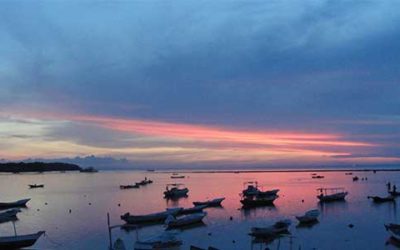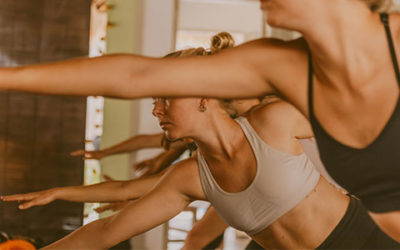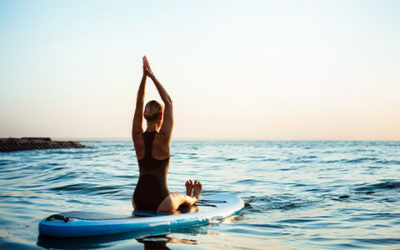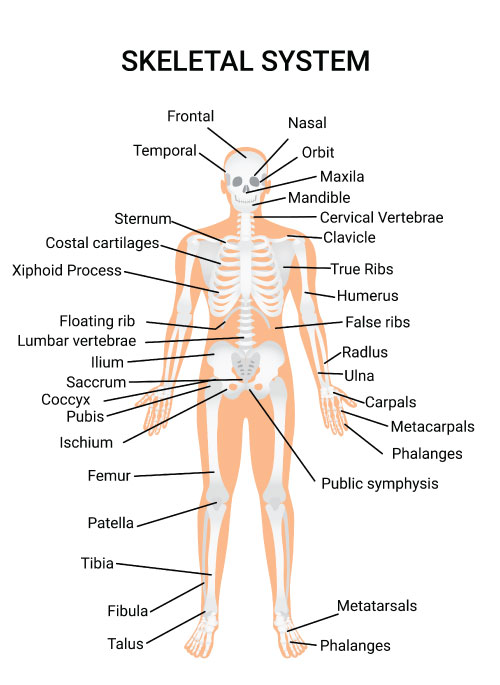
Yoga Anatomy | Human Anatomy | Skeletal System
Yoga research about the musculoskeletal system shows that practicing yoga affects all body systems. Studying the anatomical systems as modern biology defines them-then, challenge yourself to shift to a yogic perspective, experience the body as an interconnected whole. We gonna start by the Skeletal System following by the muscular systems and so much more because the human body is an extraordinary machine.
SKELETAL SYSTEM – The skeletal system is made by 206 bones, they are dynamic and living organs. Together they form the frame for the body that provides struture, protection and the ability to move.
The bones are made of collagen and they store a mineral, the calcium who makes them strong and is vital for bodily functions. They also contain bone marrow where blood cells are produced. Bones form joints, which are supported by cartilage and structures such as ligaments. Yoga can support bone and joint health.
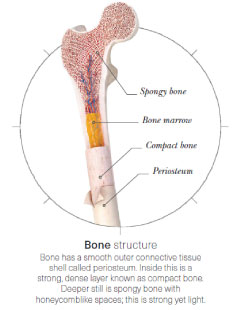
Illustration from Science of Yoga by Ann Swanson
THE SPINE – The spine or Vertebral column runs from the base of the skull to the pelvis. It’s the pillar who support the body’s weight and protect the spinal cord. There are three natural curves in the spine that give it an “S” shape when viewed from the side.
The spine is made up of 24 vertebras, they are sitting on top of each other to create natural curves. This is called a “neutral spine.
The spine is divided into three regions:
- Cervical spine — There are seven vertebrae within the cervical spine, numbered C1 to C7 from top to bottom. This inward curve is called a lordotic curve.
- Thoracic spine — There are 12 vertebrae (T1 to T12) in the chest section, called the thoracic spine. The ribs attach to the spine on the thoracic vertebrae. The curve of the thoracic spine bends outward like a backward “C” and is called a kyphotic curve.
- Lumbar spine — The lumbar spine or lower back consists of five vertebrae numbered L1 to L5. The curve of the lumbar spine also bends inward (lordotic curve).
Below the lumbar spine is a large bone called the sacrum. The sacrum forms the base of the spine and the back of the pelvis. Below the sacrum is a small bone called the coccyx (or tailbone), which is another specialized bone created by the fusion of several smaller bones during development.
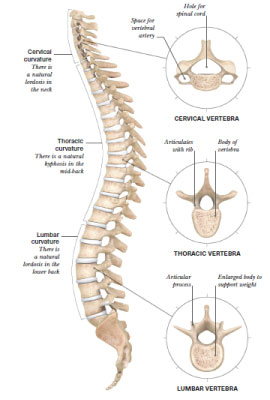
Illustration from Science of Yoga by Ann Swanson

THE PELVIS – The pelvis is made up of two hip bones connected by the sacrum, and four articulations: Sacroiliac joints (x2), Sacrococcygeal and Pubic symphysis.
PELVIS FUNCTIONS
- Transfer of weight from the upper axial skeleton to the lower appendicular components of the skeleton, especially during movement.
- Provides attachment for a number of muscles and ligaments used in the movement.
- Contains and protects the abdominopelvic and pelvic viscera.
PELVIC POSITION
- Neutral Pelvis: Pelvic bowl is balanced, with a neutral lumbar curve
- Posterior Tilt: Pelvic bowl tilt backward, flattening lumbar curve.
- Anterior Tilt: Pelvic bowl tilt forward, exaggerating the lumbar curve
Anatomy Course
Wish to combine Anatomy knowledge with yoga? Join one of our Vinyasa Yoga Teacher training
110hs Vinyasa Yoga Teacher Training
- Nov 2023, June & Nov 2024
- Immersive Life Acceptance
- 12 days Vinyasa Training Course
- Nusa Lembongan, Bali
- 22hs of Yoga Anatomy with Rachel Ellery
- Asana Study Lab – Biomechanic
- History, Philosophy
- Teaching tools & lots of practice
- Yoga Sequencing rules & creativity development
From 1.395$
~ 21.775.000 IDR
More articles
Keep reading
How to choose a Yoga Class while traveling
Yoga lovers can easily establish a regular yoga practice when they are at home and in control of their daily routine, but traveling (whether for business or pleasure) has a habit of throwing them a little off track. So what better way to get back on and stay on track...
Muscular System Overview – Body Muscles
MUSCULAR SYSTEM OVERVIEW | BODY MUSCLES Muscles are part of our bodies that allow us to move. The muscles are made up of special tissues that can contract or shorten when they receive a signal from the brain. The muscles are attached to bones by stretchy tissue...
Nusa Islands & Nusa Lembongan Travel Tips
Why you should visit Bali and its amazing Nusa Lembongan IslandTips for your trip to Nusa Island, and Yoga Retreat BaliThe Nusa Islands consist of three Islands: Nusa Penida, Nusa Lembongan, and the smallest Nusa Ceningan. Most of the people will visit Nusa Penida or...

